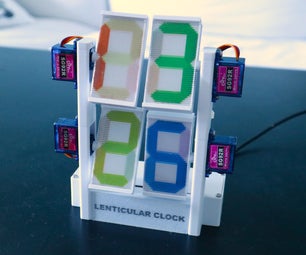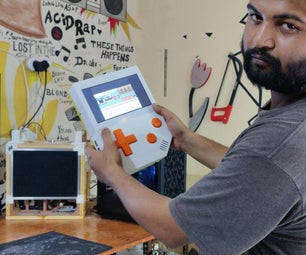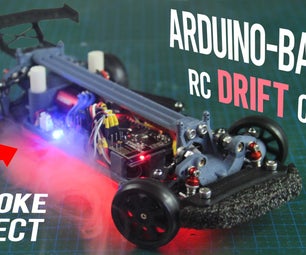Introduction: Sump Pump Water Level: the Hardware
The second part of this tutorial about the software can be found here:
https://www.instructables.com/id/Sump-pump-water-level-The-software/
What you need:
* 2 X pieces of wood 4X6. 1/4'' and the other 1/2'' thick
* 1 X 3 inches pipe. length varies depending of the deep of your pit.
* A couple of screw
* 1 X 1k resistor
* 1 X Raspberry pi
* 1X HC-SR04 ultrasonic sensor
* Wire
https://www.instructables.com/id/Sump-pump-water-level-The-software/
What you need:
* 2 X pieces of wood 4X6. 1/4'' and the other 1/2'' thick
* 1 X 3 inches pipe. length varies depending of the deep of your pit.
* A couple of screw
* 1 X 1k resistor
* 1 X Raspberry pi
* 1X HC-SR04 ultrasonic sensor
* Wire
Step 1: The Sensor
The sensor mesure the time it took to an ultrasound to get back to it.
Step 2: Create the Base
First, cut a 3 inches hole in the thicker 4''X6'' piece of wood. Stick the pieces of wood together.
Step 3: Prepare the Base for the Sensor.
Drill two 3/4'' hole in the center of the 3'' hole. The distance between them is 1''. Add 3 screw to hold the pipe.
Step 4: Add the Sensor
Mount the sensor on 2 spacer to keep the sensor level. Stick the sensor to the spacer with hot glue.
Step 5:
Add 8 screw to hold the wired. Optional: add a plexyglass cover to protect your masterpiece.
Step 6: Connection
How to connect to the raspberry:
Pin 1 GND: connect to the ground of the rasp.
Pin 2 Echo to gpio 9
Pin 3 Trig to gpio 11. Add a 1k resistor
Pin 4 VCC to the 3.3V
Note 1: According to the manual, the sensor used 5v. But it work perfectly at 3.3v.
Note 2: Beware, we see the back of the sensor in this pic, so the order of the pin are reverse.
Pin 1 GND: connect to the ground of the rasp.
Pin 2 Echo to gpio 9
Pin 3 Trig to gpio 11. Add a 1k resistor
Pin 4 VCC to the 3.3V
Note 1: According to the manual, the sensor used 5v. But it work perfectly at 3.3v.
Note 2: Beware, we see the back of the sensor in this pic, so the order of the pin are reverse.
Step 7: Add the Pipe
Add the pipe to the controller and thighten the 3 screw.
Step 8: The Code
First, you need to save the code on the rasp with the extension *.py. Then run the command python myfile.py
Code:
#!/usr/bin/python
#+-+-+-+-+-+-+-+-+-+-+-+-+-+-+-+-+-+-+-+-+-+
#|R|a|s|p|b|e|r|r|y|P|i|-|S|p|y|.|c|o|.|u|k|
#+-+-+-+-+-+-+-+-+-+-+-+-+-+-+-+-+-+-+-+-+-+
#
# ultrasonic_1.py
# Measure distance using an ultrasonic module
#
# Author : Matt Hawkins
# Date : 09/01/2013
# Import required Python libraries
import time
import RPi.GPIO as GPIO
# Use BCM GPIO references
# instead of physical pin numbers
GPIO.setmode(GPIO.BCM)
# Define GPIO to use on Pi
GPIO_TRIGGER = 11
GPIO_ECHO = 9
# You need to change the variable "compensation" according to the distance from the edge of the pit to the sensor
compensation = -11
print "Ultrasonic Measurement"
# Set pins as output and input
GPIO.setup(GPIO_TRIGGER,GPIO.OUT) # Trigger
GPIO.setup(GPIO_ECHO,GPIO.IN) # Echo
# Set trigger to False (Low)
GPIO.output(GPIO_TRIGGER, False)
# Allow module to settle
time.sleep(0.5)
# Send 10us pulse to trigger
GPIO.output(GPIO_TRIGGER, True)
time.sleep(0.00001)
GPIO.output(GPIO_TRIGGER, False)
start = time.time()
while GPIO.input(GPIO_ECHO)==0:
start = time.time()
while GPIO.input(GPIO_ECHO)==1:
stop = time.time()
# Calculate pulse length
elapsed = stop-start
# Distance pulse travelled in that time is time
# multiplied by the speed of sound (cm/s)
distance = elapsed * 34000
# That was the distance there and back so halve the value
distance = distance / 2
distance = distance + compensation
print "Distance : %.1f" % distance
# Reset GPIO settings
GPIO.cleanup()
Note: You need to change the variable "compensation" according to the distance from the edge of the pit to the sensor
Note 2: The distance are in cm.
Thank to Matt Hawkins for this code
Code:
#!/usr/bin/python
#+-+-+-+-+-+-+-+-+-+-+-+-+-+-+-+-+-+-+-+-+-+
#|R|a|s|p|b|e|r|r|y|P|i|-|S|p|y|.|c|o|.|u|k|
#+-+-+-+-+-+-+-+-+-+-+-+-+-+-+-+-+-+-+-+-+-+
#
# ultrasonic_1.py
# Measure distance using an ultrasonic module
#
# Author : Matt Hawkins
# Date : 09/01/2013
# Import required Python libraries
import time
import RPi.GPIO as GPIO
# Use BCM GPIO references
# instead of physical pin numbers
GPIO.setmode(GPIO.BCM)
# Define GPIO to use on Pi
GPIO_TRIGGER = 11
GPIO_ECHO = 9
# You need to change the variable "compensation" according to the distance from the edge of the pit to the sensor
compensation = -11
print "Ultrasonic Measurement"
# Set pins as output and input
GPIO.setup(GPIO_TRIGGER,GPIO.OUT) # Trigger
GPIO.setup(GPIO_ECHO,GPIO.IN) # Echo
# Set trigger to False (Low)
GPIO.output(GPIO_TRIGGER, False)
# Allow module to settle
time.sleep(0.5)
# Send 10us pulse to trigger
GPIO.output(GPIO_TRIGGER, True)
time.sleep(0.00001)
GPIO.output(GPIO_TRIGGER, False)
start = time.time()
while GPIO.input(GPIO_ECHO)==0:
start = time.time()
while GPIO.input(GPIO_ECHO)==1:
stop = time.time()
# Calculate pulse length
elapsed = stop-start
# Distance pulse travelled in that time is time
# multiplied by the speed of sound (cm/s)
distance = elapsed * 34000
# That was the distance there and back so halve the value
distance = distance / 2
distance = distance + compensation
print "Distance : %.1f" % distance
# Reset GPIO settings
GPIO.cleanup()
Note: You need to change the variable "compensation" according to the distance from the edge of the pit to the sensor
Note 2: The distance are in cm.
Thank to Matt Hawkins for this code
Step 9: Final Result
Voila! All you have to do now is to fixed the sensor in your pit.
Step 10: Next Tutorial
In the next week, I will show you how to present the result of the sensor on a web page.
I'm not as good as I want to in english, so feel free to send me any correction in my text.
I'm not as good as I want to in english, so feel free to send me any correction in my text.










